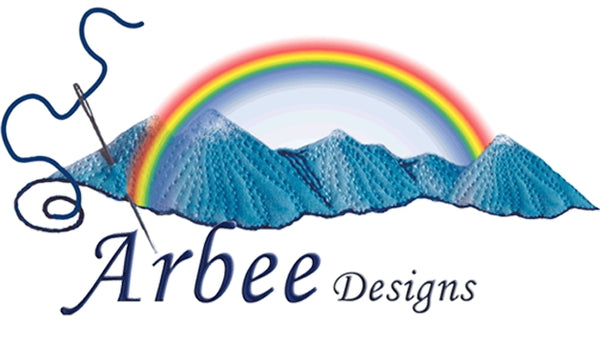If you have been following my blog posts you will already know that I'm an applique lover. I love creating applique because each quilt is different than anyone else's quilts since I design from scratch. My designs are usually based on photos I take so I know no one else will have the same.
As you can imagine over the years I have tried many different forms of applique. I started out with hand applique (needle-turn applique) which I love to do however it is slow and would take me too long to create patterns if I had to make them all by hand. I still do it on occasion. In fact last year (or was that the year before?), I wrote some blog posts on how to do hand applique that you might find useful.
My first lesson was getting prepared - tools drawing and cutting out: Needle Turn Applique part 1
....And that lead to a second part for the actual stitching and how to go about it: Needle Turn Applique part 2
I had to include another lesson on how to make a quilter's knot which I use to begin my applique. There is a video with this one so you can see how it's done: Quilter's Knot - how to start and end applique
....And just because circles are created a little differently, I added a separate lesson for that: Hand applique circles
Since hand applique was a little slow to produce, I knew I had to move to machine applique. Since I already loved machine quilting this wasn't a problem at all. Over the years I have developed my own style. I started out with satin stitch applique and stained glass applique (bias binding the edges). That was in a time before fusible webbing and bias webbing was invented when I used an iron-on stabilizer to help secure the edges. Now it is much easier!
I also tried the freezer paper method which resembled hand applique and I rather enjoyed that although I found it a little messy and fiddly so I moved on from there to fusible web applique. (If you need to know more about fusible webbing read this article I wrote: What is Fusible Webbing)
I've already written some lessons on how to use fusible web...
The first is for the requirements you'll need: Fusible Webbing Requirements
The next is how-to do it (includes a free daisy pattern): How to use fusible webbing for applique
....And now, I can think of another lesson I should add so that will come next week.... I'll update this space after I've written it. It will be about building individual elements before applying them to the background, something I often use in my patterns.
Fusible webbing certainly made creating satin stitch applique easier ...and stained glass applique too for that matter. However, I find the satin stitch a little bulky for me and although I still do stained glass applique I know it doesn't allow me to create the detail I want. I much preferred blanket stitch (well, in early days), but for the past fifteen years or more, I have developed my own free-motion stitching style which I refer to as soft-edge applique. This is great for fine details like pointed tips on leaves and petals. I still use blanket stitch from time to time but for the most part, it is free-motion for me.
Here is another lesson showing both these methods: Comparing free-motion stitching to Blanket stitching for fusible webbing applique
.....And here are some photos of how I've used both blanket stitch and free-motion soft-edge applique in patterns.

A Freshness of Spring - closeup of free-motion stitching
A couple of years ago, I put together an online workshop to teach my favorite method - soft-edge applique. It includes more than that though, I also demonstrate how to do blanket stitch, needle-turn, and Brittingham applique to create a beautiful quilt (or quilt blocks) that I made for my granddaughter. If you'd like to learn more visit "BOM Spring Life Workshop"
What's your favorite method of applique?







